Background Problems
The act of gift-giving holds a significant place in Indonesian culture, embodying values such as hospitality, respect, community, and generosity. It serves as a means to celebrate, convey appreciation, and foster connections with others.
However, in the process of upholding this tradition, many individuals encounter issues. They often receive gifts that are neither needed nor appreciated, and in some cases, these gifts might duplicate items they already possess. This can contribute to sustainability challenges, as unwanted gifts may ultimately go to waste.
The Challenge & Objective
Resolving these challenges can be as simple as openly discussing gift preferences with friends and family. However, in Indonesian culture, older generations often perceive requesting gifts as inappropriate, leading to limited adoption of such practices.
Nowadays, younger generations are more inclined to share their gift preferences but lack a dedicated tool for a streamlined approach.
Our primary challenge lies in assisting younger generations in modernizing the gift-giving concept. This entails creating a user-friendly platform that respects and aligns with Indonesian cultural norms while ensuring accessibility and relevance for its users.
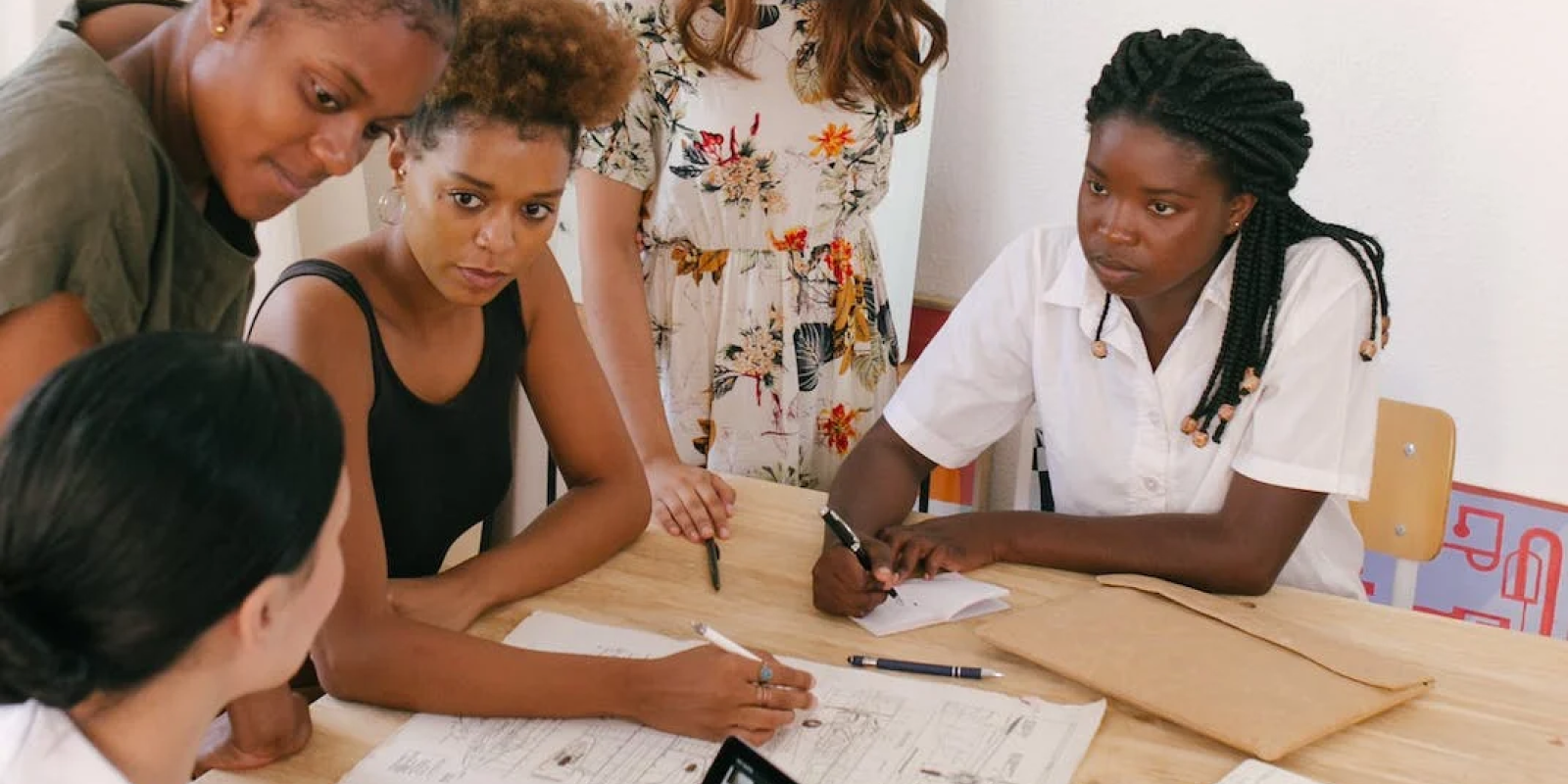
Our Strategy
Our strategy involves leveraging design thinking methodology to address these challenges. We've structured our project into five phases: Empathize, Define, Ideate, Prototype, and Test. By following this strategic approach, we aim to gain a deep understanding of our users' needs and preferences, ultimately delivering effective solutions.

Competitor Analysis
Given the scarcity of companies providing gift registry features in Indonesia, our exploration for inspiration led us to renowned international websites and e-commerce platforms. Particularly, Target and Babylist emerged as noteworthy players in this field, demonstrating effective implementations of the gift registry feature. Their global prominence provides valuable insights into successful strategies and user experiences that could significantly influence and enhance the development of our gift registry platform in the Indonesian market.
Target and Babylist stand out as formidable competitors. Target, a well-established retail giant, integrates its gift registry seamlessly into its broader shopping platform, allowing users to curate lists from a vast array of products available on the Target website. On the other hand, Babylist specializes in catering to the needs of parents-to-be, offering a comprehensive and user-friendly platform that consolidates items from various retailers. Both international competitors emphasize the convenience of a centralized registry, but Babylist distinguishes itself with its focus on a specific niche, catering specifically to the needs of expectant parents.
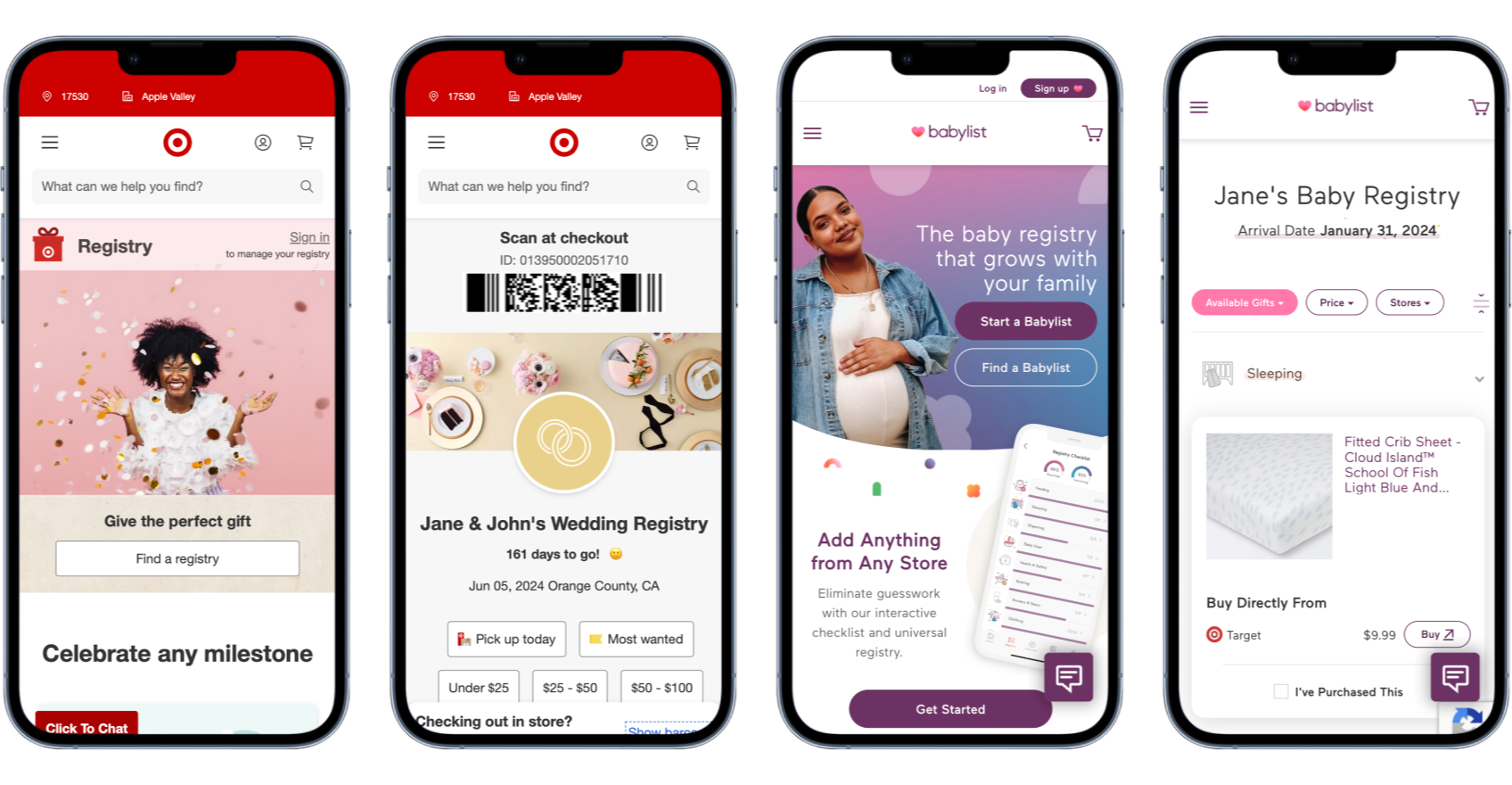
User Persona & Design Strategies
Building upon the survey results, we were able to categorize our target users into two major personas: Gift Receiver and Gift Giver. Identifying their pain points, we have chosen to develop a solution aimed at simplifying their overall experience.

Categorized Events
Following insightful findings, we have categorized the Gift Registry feature into four distinct sections, aligning with prevalent user preferences based on their Life Events: Baby Born, Wedding, Birthday, and Any Occasion.
With these meticulously curated categories, our aim is to pioneer a more accessible and efficient gift-giving culture in Indonesia. Through the implementation of the Gift Registry feature, we aspire to provide users with a seamless and user-friendly experience, elevating the art of gift-giving across various significant life events and occasions.
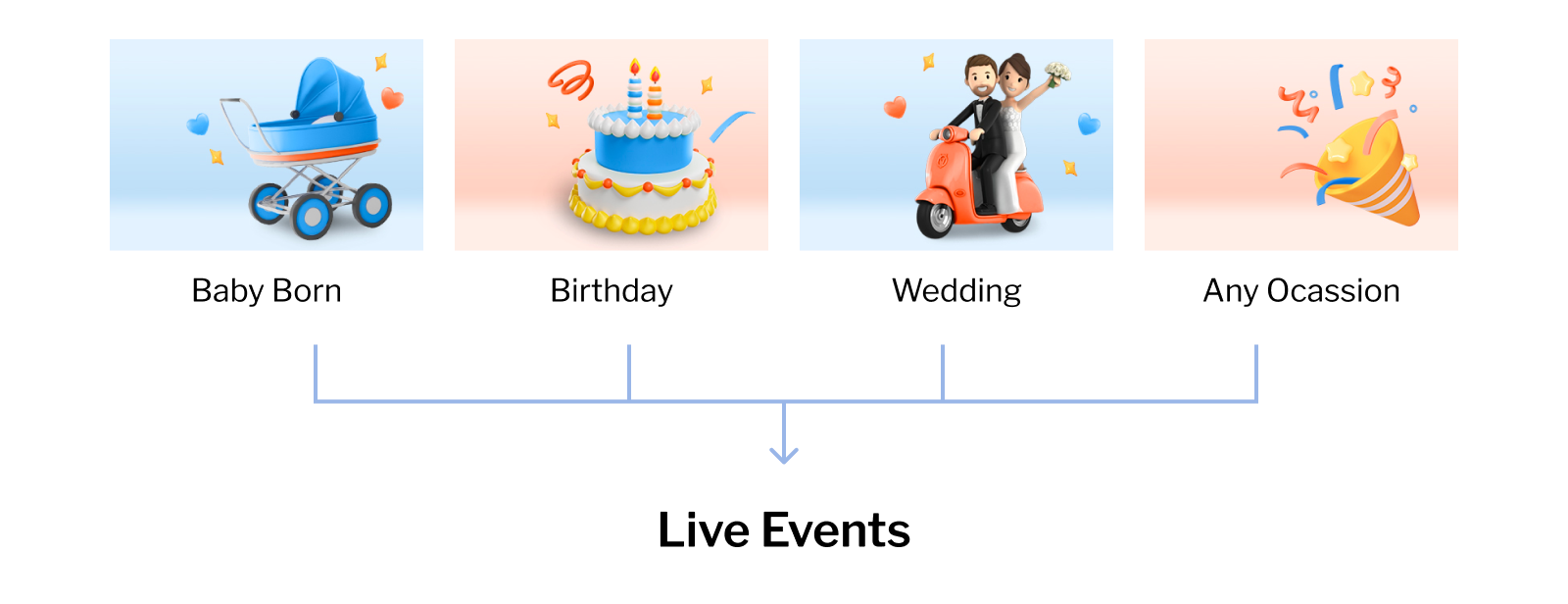
Wireframe & Prototype
Based on our findings, we translated ideas into wireframes and prototypes. Our process involved dividing the flow into two main categories: Gift Receiver and Gift Giver flows. We ensured that our visual representations incorporated ideas derived from competitor research and survey findings.
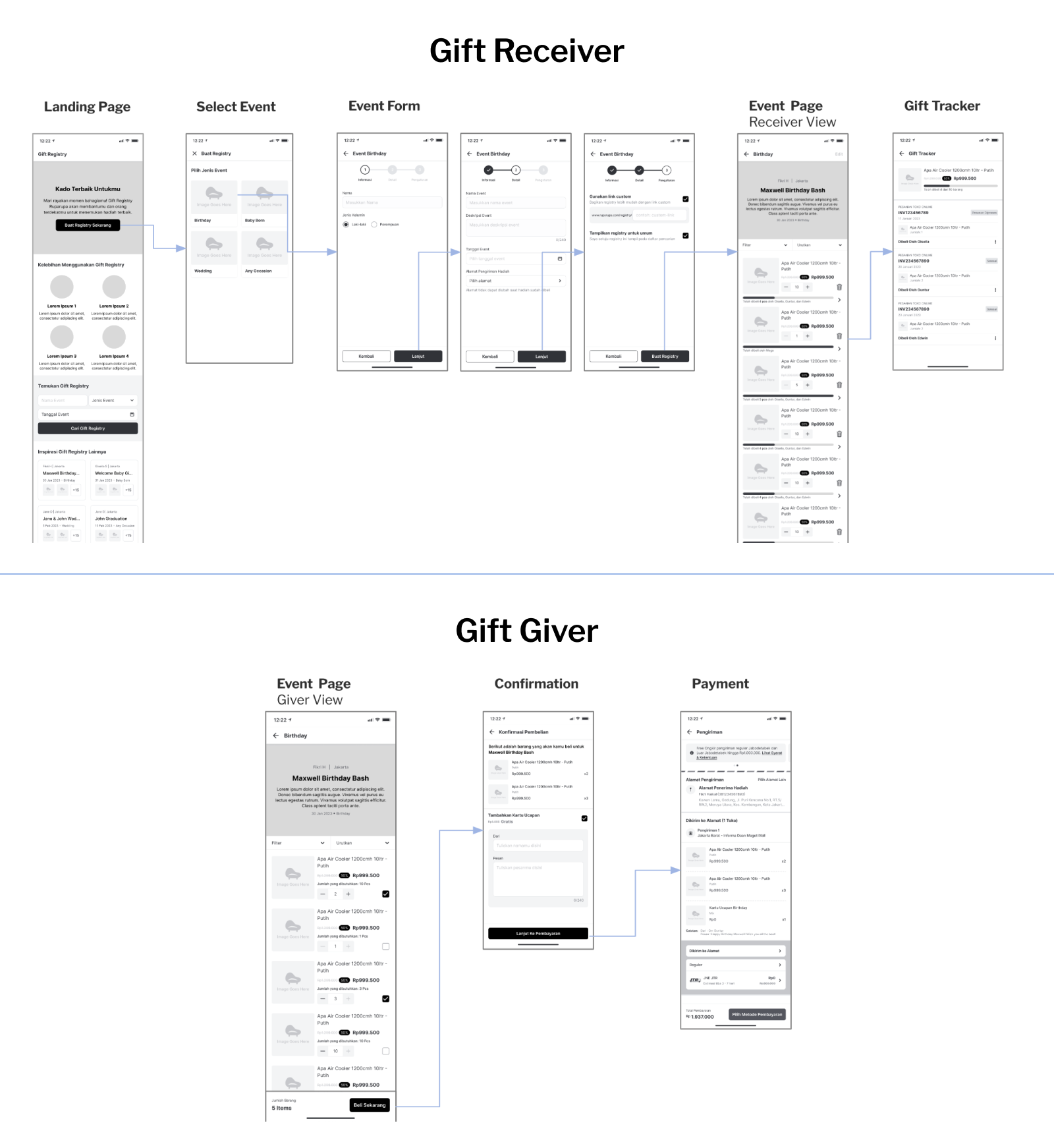
Usability Testing
Following our initial design phase, we recognized the importance of ensuring that our design resonates effectively with our target audience. To validate our design, we opted for a usability testing approach, engaging users from diverse backgrounds aligned with our major categories. This comprehensive testing provided valuable insights into the strengths and weaknesses of our design.
Total participant: 5 People
- Age: 18-45 years old
- 60% Female, 40% Man
- Located in Indonesia
- 1-on-1 Online Method
Usability Tasks
Task 1: Landing Page
- What do user think?
- What they wanted to see?
Task 2: Event Form
- What do user think?
- What is the pain points?
- How fast user finish the flow?
Task 3: Event Page & Gift Tracker
- What do user think?
- What is the pain points?
- How fast user finish the flow?
Task 4: Giver Flow
- What do user think?
- What is the pain points?
- How fast user finish the flow?
Retrospective
- Where did you hesitate? Why?
- What did you like about it? Explain your thought process
- What didn’t work? What was confusing?
- Do you see this as being helpful? In what situations?
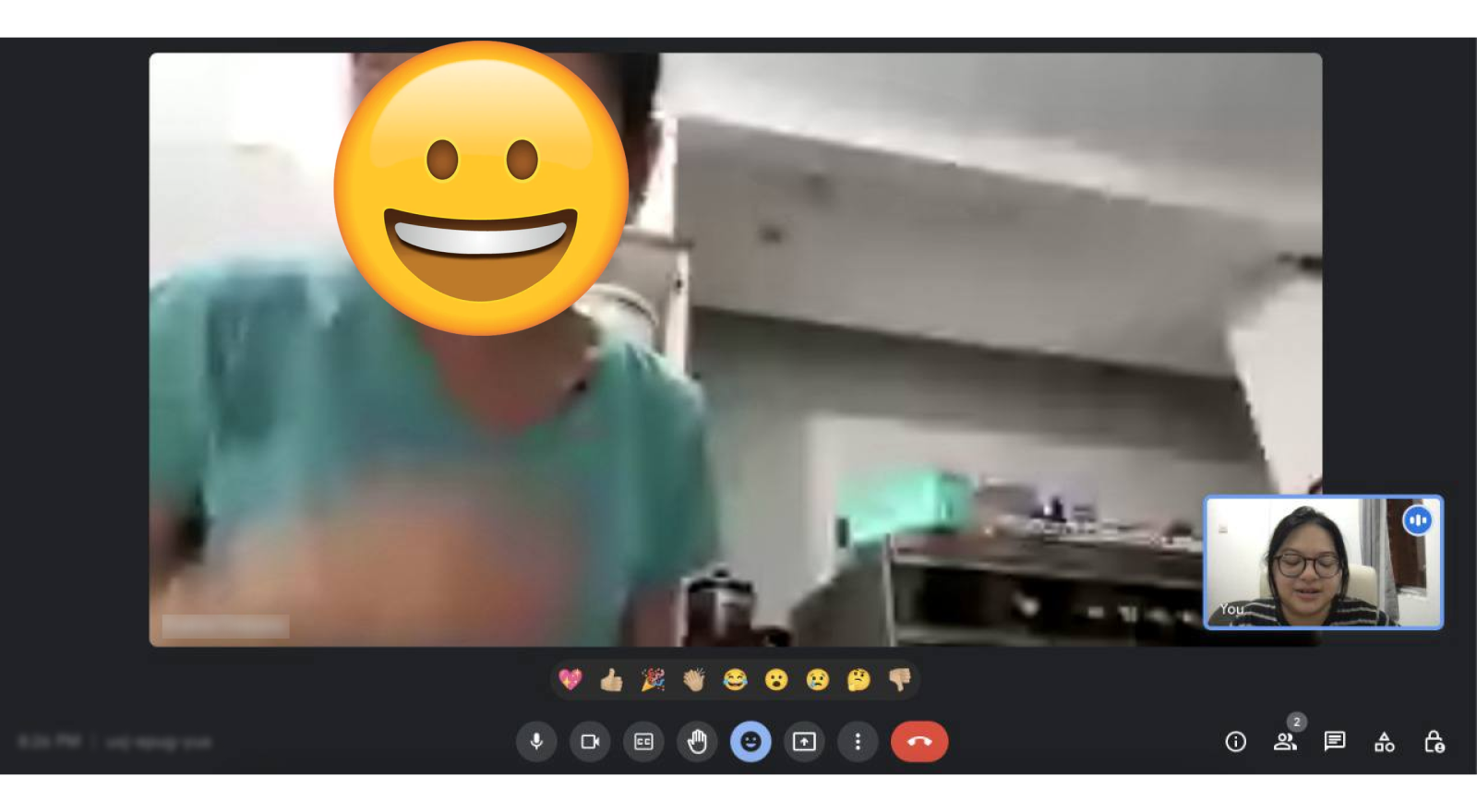
The Final Design
Armed with valuable insights gathered from the usability testing, our next strategic step involves implementing these findings into the high-fidelity and final design iterations. This refined design will serve as the blueprint for our front-end engineers, ensuring a seamless transition from concept to execution.
By incorporating user feedback into the final design, we aim to optimize user experience, address identified issues, and enhance overall usability. This collaborative process between design and engineering underscores our commitment to delivering a polished and user-centric Gift Registry feature on Ruparupa.
